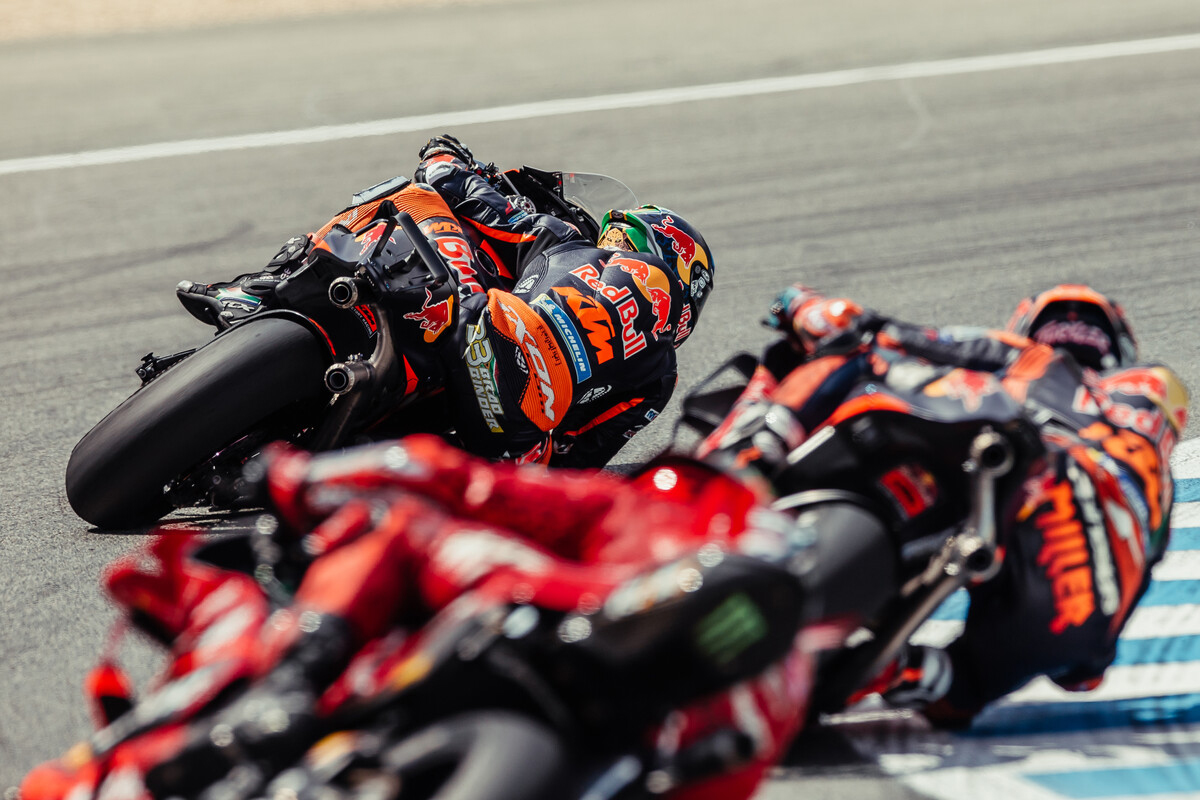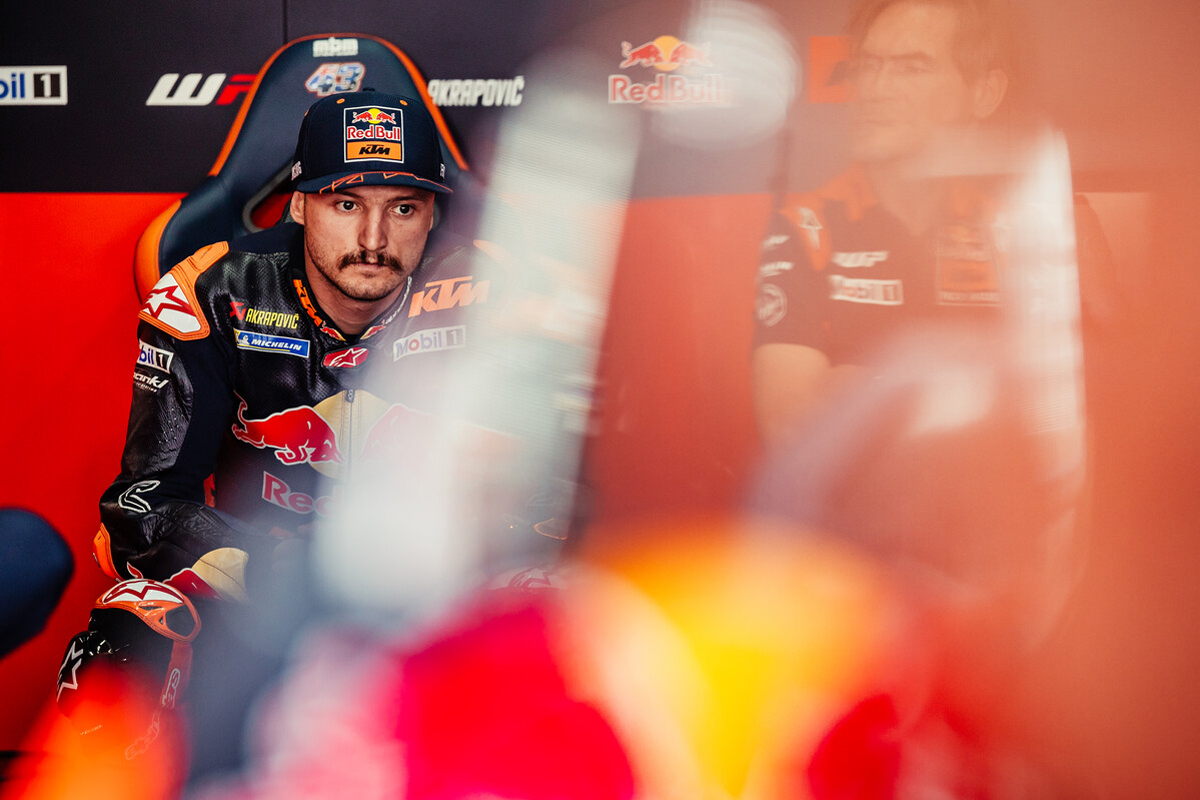
If, like me, you’ve been dismayed at the increasing reliance of MotoGP engineers on aerodynamics to improve performance, only for it to come at the expense of actually being able to follow another bike close enough to perform an out-braking manoeuvre at the end of a straight or to maintain a usable front tyre pressure, then this latest piece of information from Aprilia might have you tearing your hair out.
As reported in motorcyclenews.com, Aprilia has turned its attention to that large piece of real estate called the rider as a blank canvas for further aerodynamic experimentation.
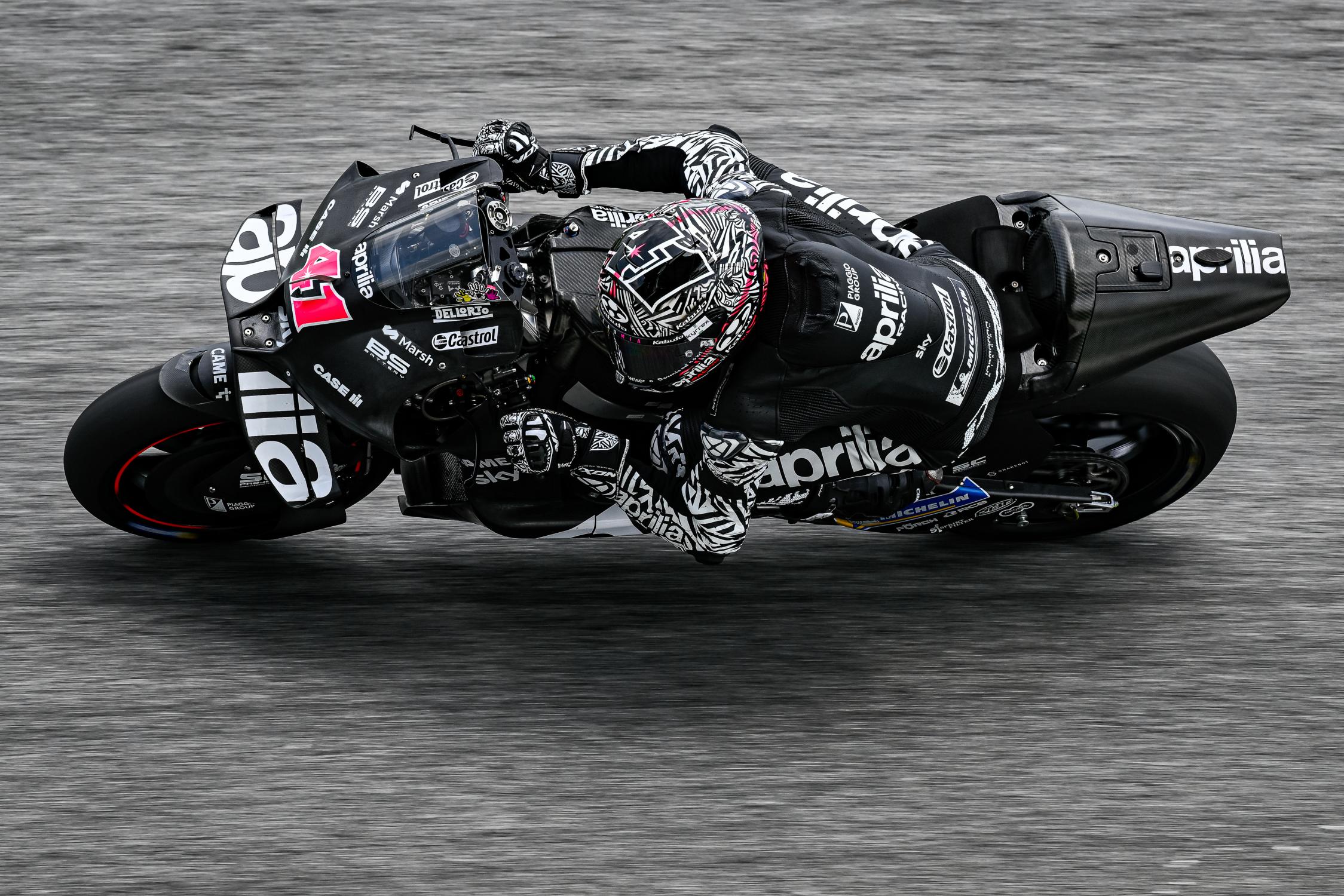
It’s now not enough for the bike to be sprouting ever more outrageous aerodynamic add-ons: the rider himself is to become an aerodynamic tool in the quest for more stability and wind-cheating properties. Aprilia has filed patent applications for wind-cheating race leathers, which comprise ten detachable panels, attached to the leathers by velcro, designed to smooth the airflow over the rider and direct that airflow more efficiently onto the rear “wing” that is this year’s latest must-have item.
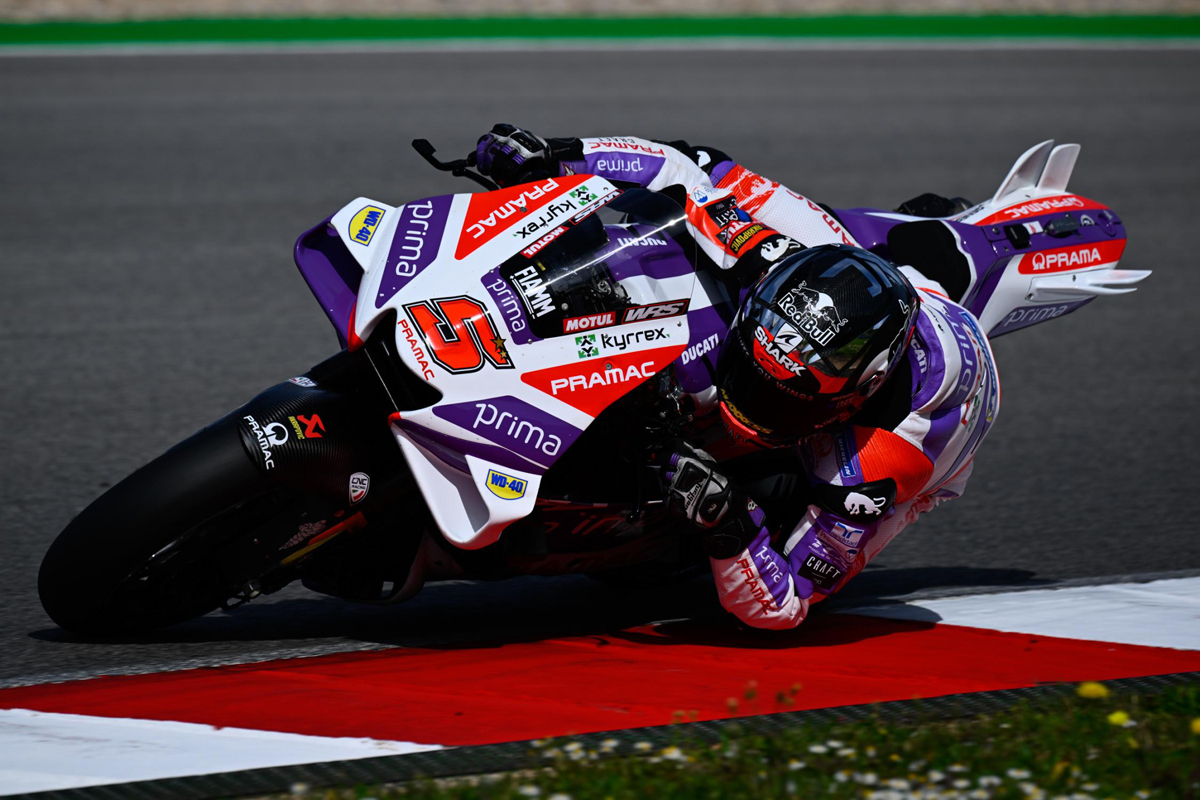
It always confused me how a small wing directly behind the large and distinctly un-aerodynamic rider was ever going to get enough clean airflow to be in any way effective. Think of riding a bike with a large screen – adventure or touring bikes, for example. It doesn’t matter how quiet your helmet has been designed to be, the wash of disturbed air hits the helmet and makes a mockery of any noise-suppressing properties the helmet ever had. Now, ride a naked bike with the same helmet and notice how quiet the helmet is with only a direct but clean stream of air hitting it. That’s the same principle as placing a tiny “wing” directly behind a rider, even if he is crouching down as low as he can behind his own fairing and screen.
Of course, there are advantages to making the airflow as clean as possible: less turbulence behind the rider and the bike cuts drag and increases speed. That is what that rear “wing” has been designed to do but it can’t do its job properly because of the rider disturbing the airflow.
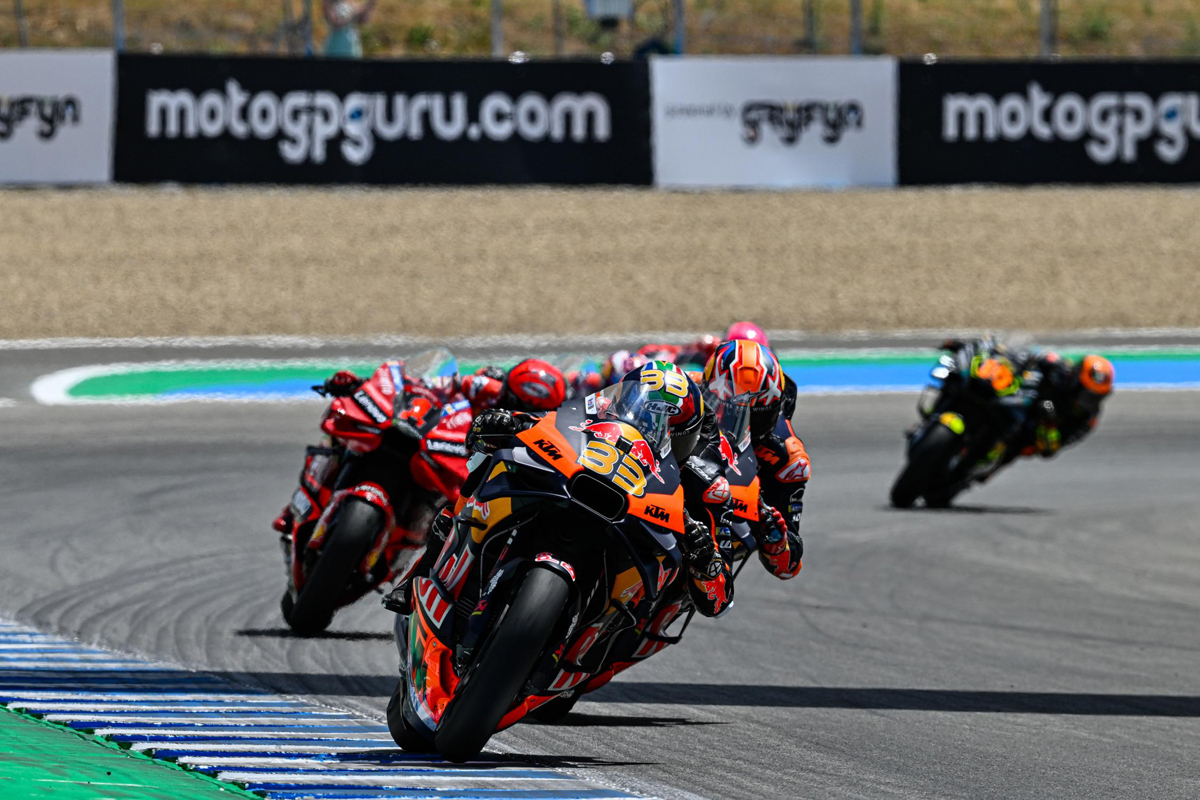
The soft and flexible race suit panels Aprilia has designed are intended to eliminate wrinkles on the race suit while still allowing the rider to move freely. Every surface of the race suit has been considered, with panels attaching to forearms, upper arms, the sides of the torso and the thighs, while the knee sliders are incorporated into the suit to remove that unsightly and draggy piece of equipment.
The aim is not only improved air penetration and flow but also less buffeting for the rider which cuts fatigue. A final benefit is increased rider protection in the event of a crash.
With this latest development, we are entering the realms of fantasy and, as Formula One has demonstrated, ever more sophisticated aerodynamics is not exactly a source of close, exciting racing. You get the feeling that the engineers would be happier without the need for that annoyingly large lump of living matter carelessly plopped on top of their million-dollar projectiles and there is the possibility that both rider and motorcycle will become an amorphous entity in the near future as the engineers continue to make motorcycle and rider one single structure.
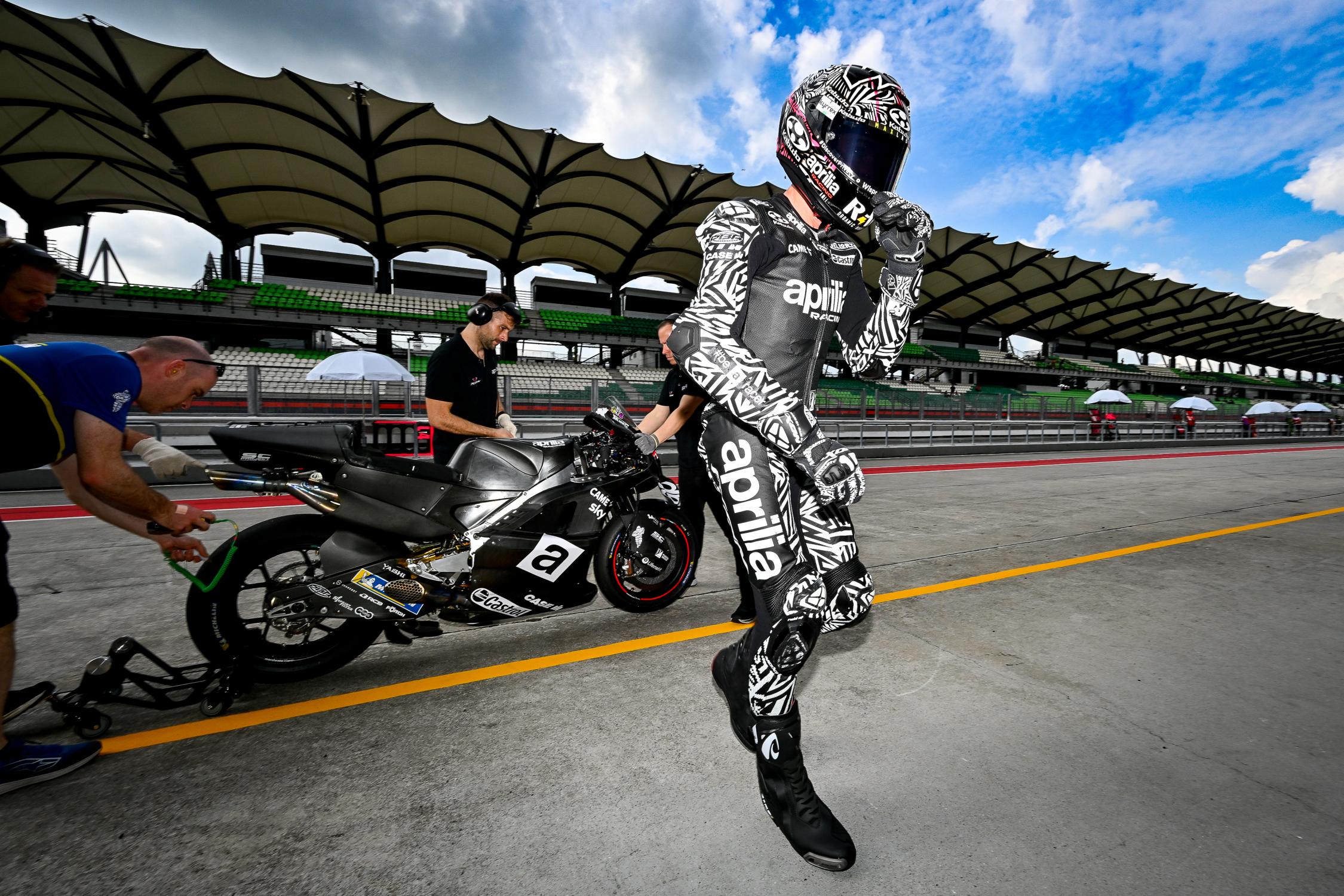
Penalty Shootout:
It wasn’t only tyre pressures that were causing the riders’ own blood pressure to rise in Jerez (see story here): the thorny and ongoing question of consistency of penalties being handed out was also cause for heated discussion.
In both the Sprint and Main race, there was a race-stopping accident at the second corner, both involving Yamaha riders. In the Sprint race, Morbidelli went for a gap left by Alex Marquez, only for the two to touch and crash, taking Bezzecchi with them. In the main race, Quartararo found himself squeezed between Bezzecchi on the inside and Oliveira on the outside, with the result that there was another crash. Quartararo subsequently received a long lap penalty – the same as Morbidelli – which was only communicated to him after the restart of the main race.
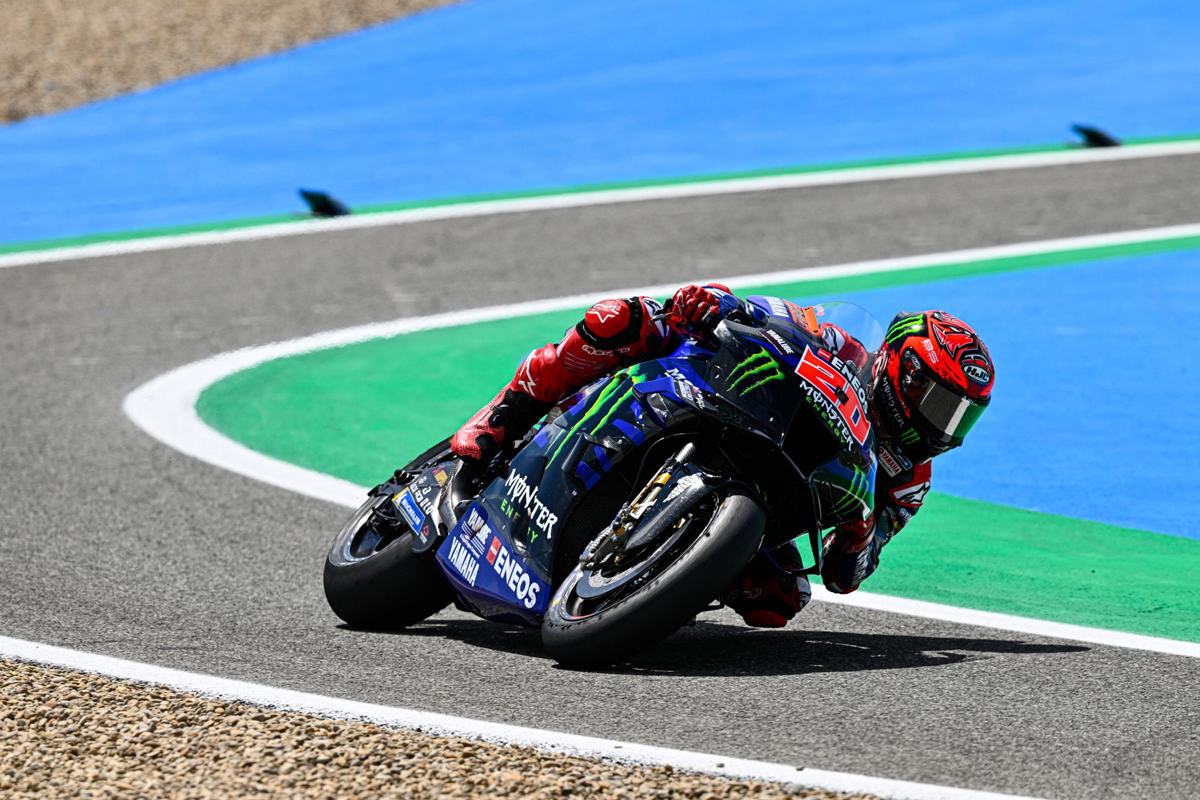
The troubling thing is that neither accident was the result of malicious or care-less riding and yet resulted in penalties for those deemed to be at fault. Surely, at the start of a race, where things are unbelievably hectic, especially in the first few corners, a bit of slack has to be cut – and often is when the shoving and barging results in pieces of carbon fibre flying everywhere – while everyone sorts themselves out. Of course, no rider wants to be responsible for taking another rider out but that’s the name of the game when everyone is bunched up tightly in the first few corners as advantages are chased after remorselessly.
A little later, Bagnaia was deemed to have been too rough on Jack Miller when a gap opened up on the inside when exiting a corner. The contact was brief and innocuous but Bagnaia was told to give the place back. Seriously? Since when has swapping a bit of paint been penalised, especially when a mistake by one rider opens up a gap for another which, being a racer, he is bound to go for?
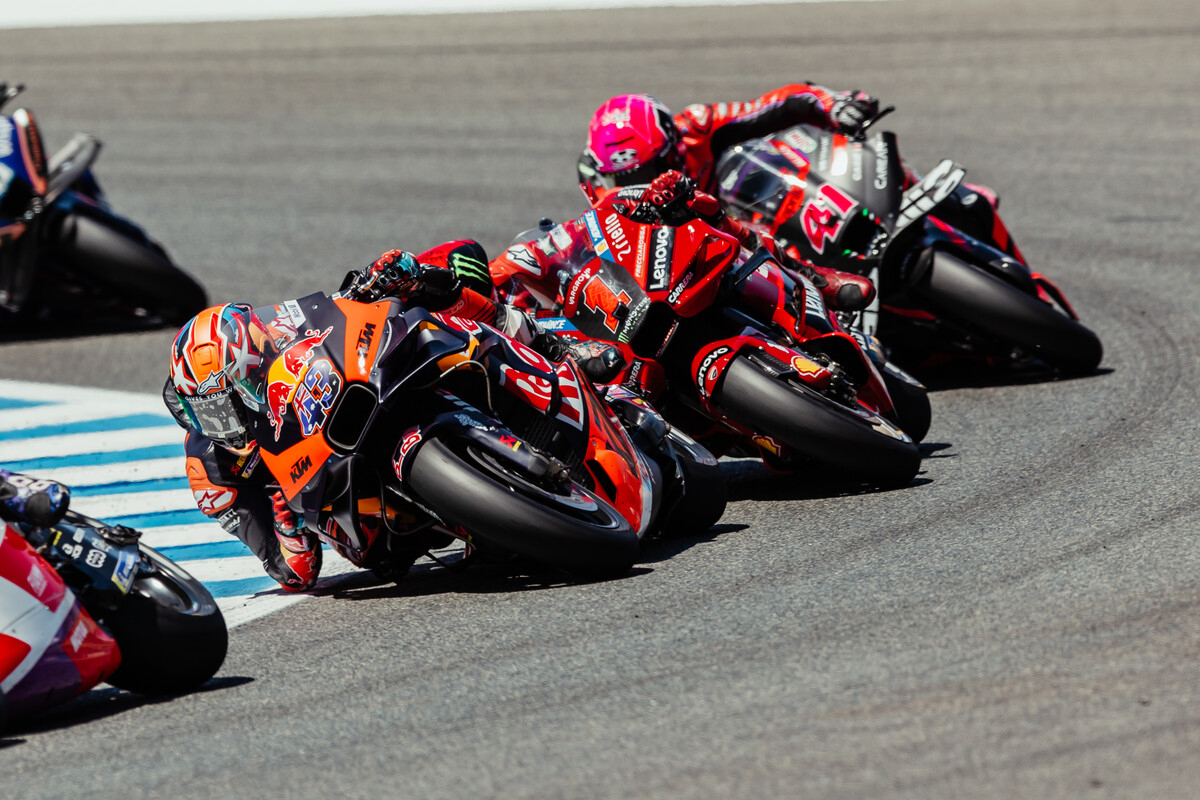
What is especially troubling is the wording of the FIM’s response to Yamaha’s appeal against Morbidelli’s penalty (which was unsuccessful): in the response, the FIM decided that Morbidelli had been “ambitious in his attempt to overtake.”
So, racers are not allowed to be ambitious any more? Is the FIM actually serious? Isn’t that the point of going racing? Take that away and the very soul of racing disappears. Tell any team manager that his rider is not going to be ambitious and go for the gap and the rider might as well pack up and go home.
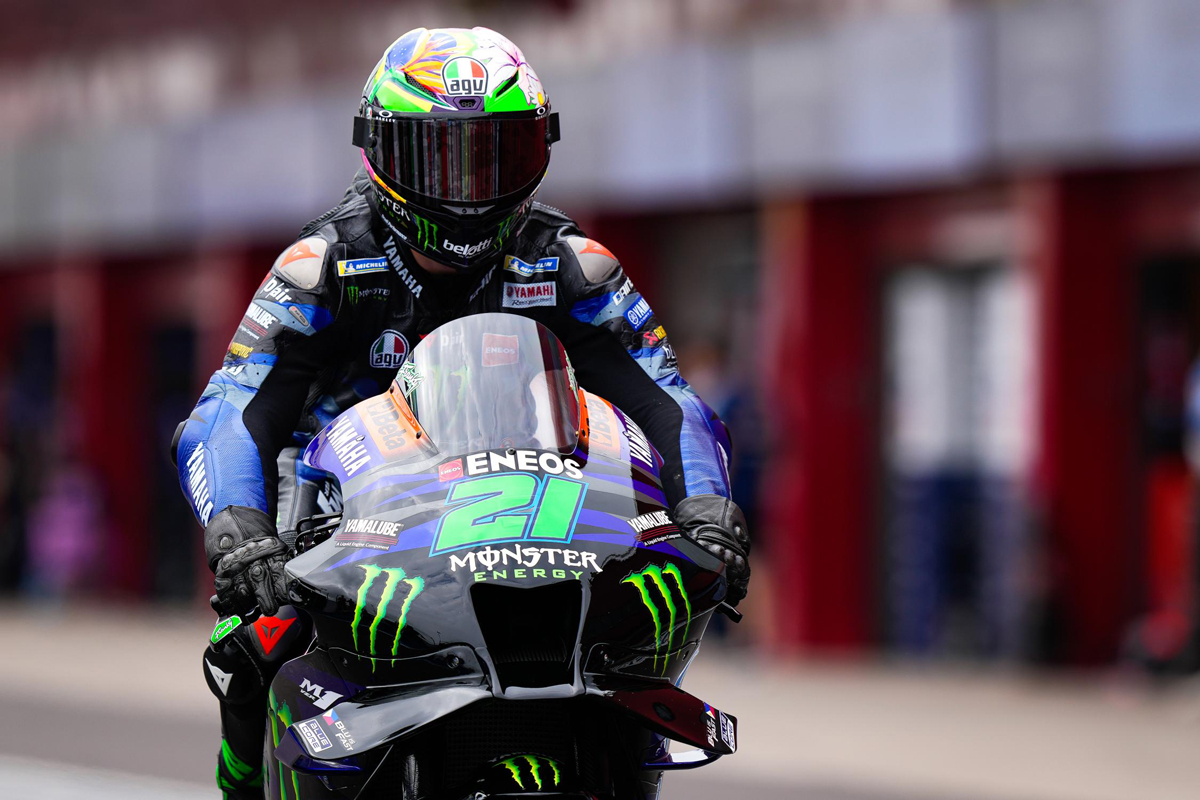
Then there is the fear factor. Brad Binder has stated that he would probably have had a lunge at Bagnaia at the last corner of the last lap but was afraid to in case he got it wrong and incurred a penalty:
“Nowadays racing isn’t how it used to be and the reality is you get penalties if you make mistakes and hit people, so takes a bit of the fun out of it, but I suppose it makes it safer,” said Binder.
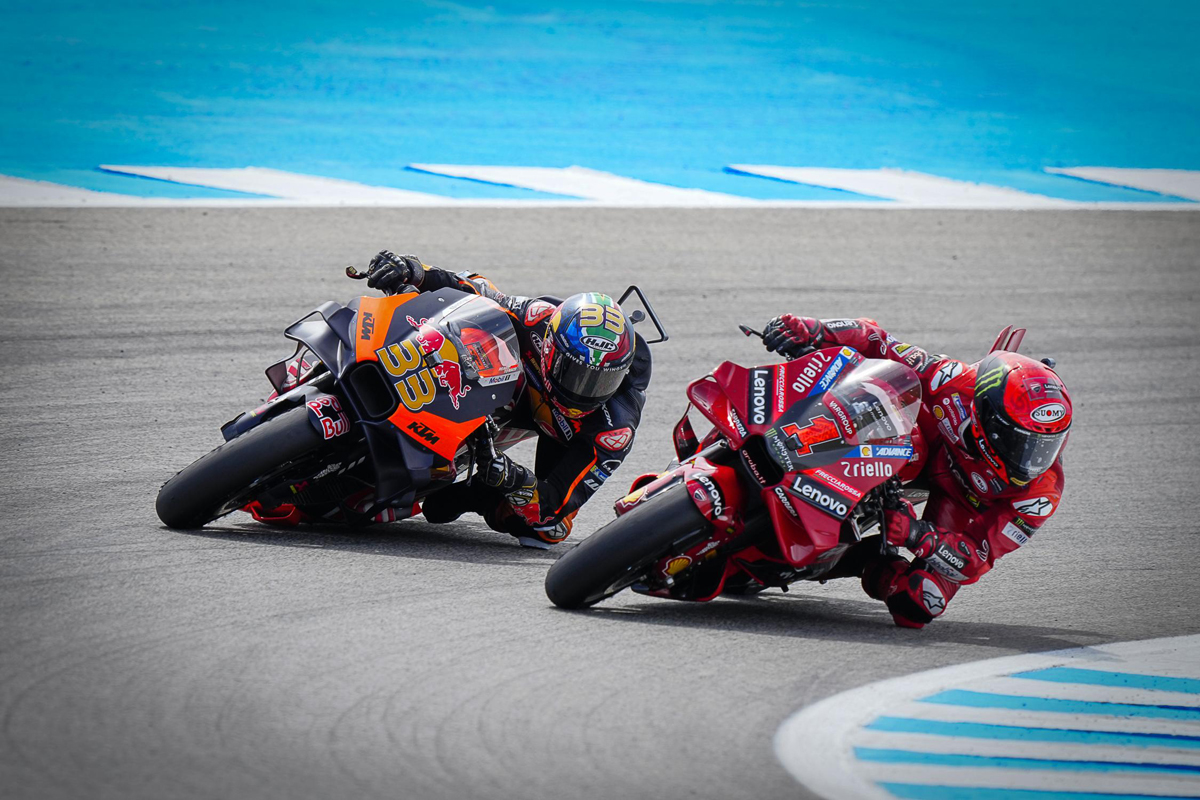
When asked if the possibility of a penalty was on his mind heading into the last corner, he could only reply, “Definitely. I mean, I’m not a guy that likes to leave anything on the table. I felt like I was almost close enough, but I wasn’t. So it would have been one of those “roll the dice and see what happens” moments. But the thing is, with the way things are nowadays, it wouldn’t be to your benefit to… It might work out fine, but there’s a very good chance you might have a bit of contact, and that position that you might gain would probably just get taken away anyway.”
The stewards’ position is not an enviable one: making a decision in the heat of a race with a rule book that is as thick as your thumb cannot be easy. Given hours to review incidents, the penalty decision might well be completely different but often there are only minutes. In the case of Morbidelli’s accident in the Sprint race, the stewards had until the next day and still penalised the Yamaha rider, which takes us right back to the beginning: what type of riding is acceptable in MotoGP right now and is it detracting from the sport?
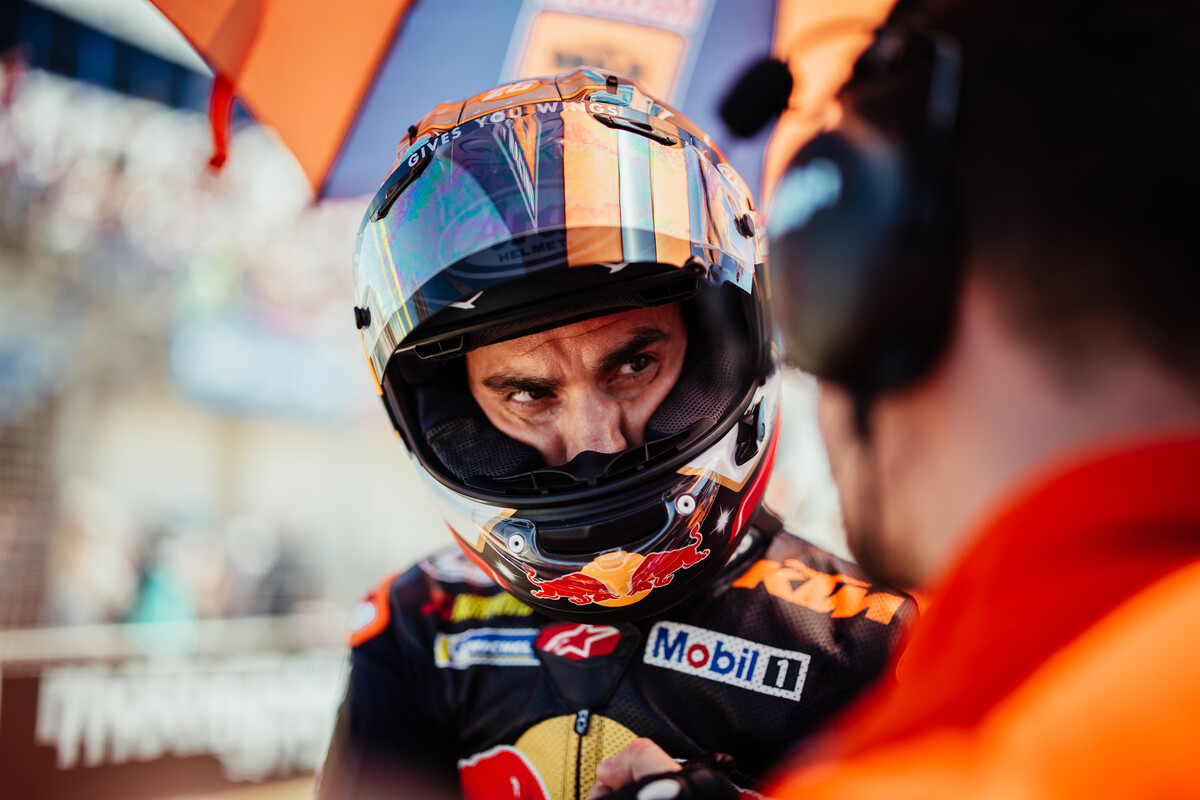
It has to be said, however, that this level of nanny-state interference is getting out of hand. Next thing we know, a rider will be penalised for diving for a gap and forcing the rider he is passing to sit up, avoiding contact and resulting in him losing a place. It’s pathetic and needs to be nipped in the bud before this sport we love is emasculated beyond recognition.
However – and this is a big however – harsher penalties are exactly what the riders were demanding after the first race of the season at Portimao where there were so many crashes! Sometimes you have to be careful what you are wishing for.
